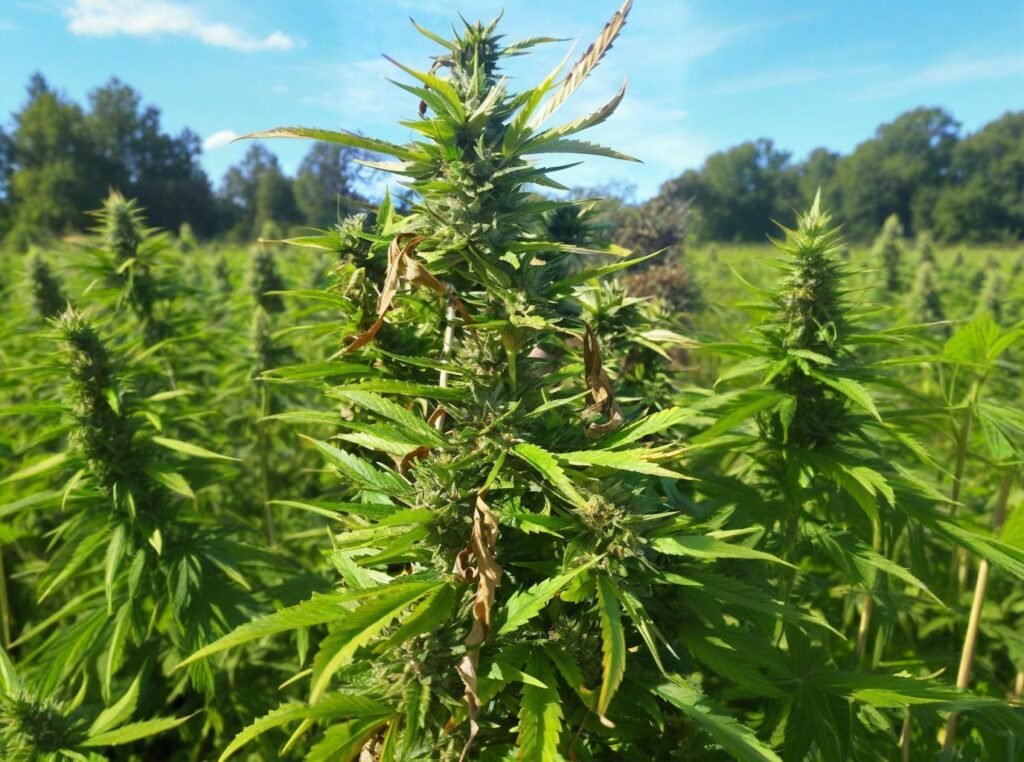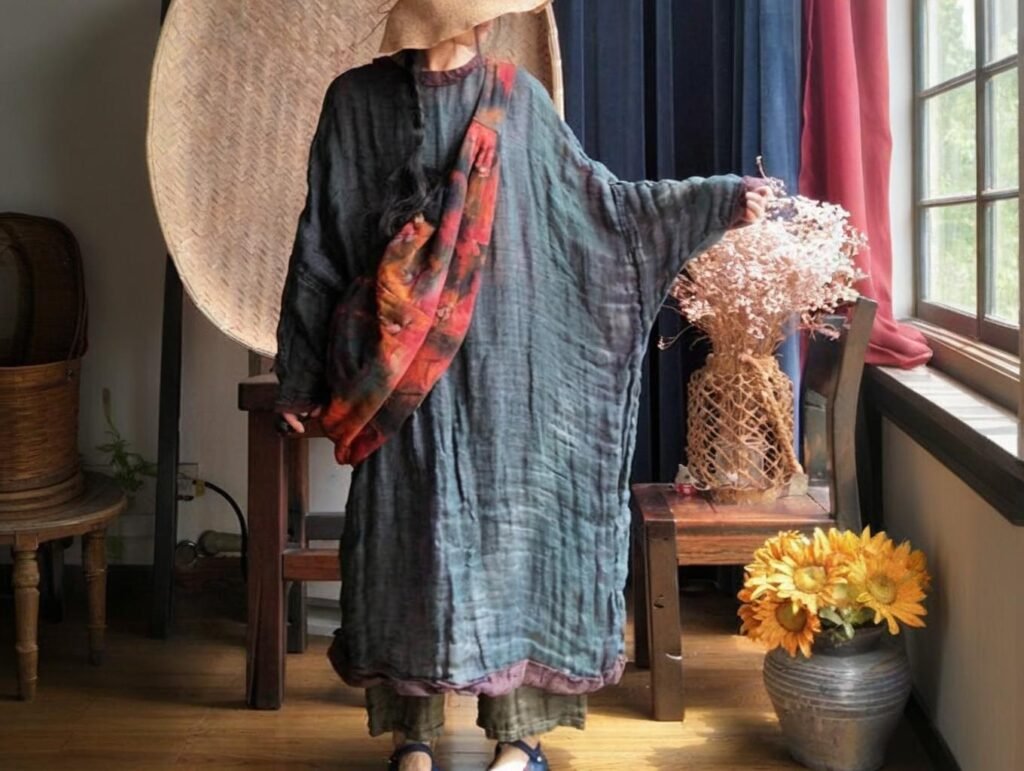
In an industry facing immense pressure to reduce its environmental impact, find new functional materials, and meet rising consumer expectations, hemp fabric has quietly emerged as a game changer. Once stigmatized by outdated legal and cultural restrictions, hemp is now celebrated for its eco-benefits, technical potential, and compatibility with circular design.
Hemp fabric is the future of textile innovation because it combines superior sustainability metrics, scalable production, advanced blending possibilities, and increasing integration with next-gen technologies—outperforming many traditional fibers in both ecological and functional domains.
Today’s B2B textile buyers aren’t just looking for low prices or familiar materials—they’re seeking fabrics that can help them meet ESG goals, create high-performance garments, and resonate with conscious consumers. Hemp offers all of that, and more. From activewear to luxury fashion, interior design to industrial canvas, hemp’s versatility is breathing new life into a stagnant supply chain.
Let’s begin this journey by unpacking the technical reasons behind hemp’s rapid rise—starting with the disruptive qualities that make it more than just another “green” alternative.
What Makes Hemp Fabric a Disruptive Innovation in the Textile Industry?
Hemp fabric is disrupting the textile industry by offering a rare trifecta: extreme sustainability, superior fiber strength, and compatibility with modern manufacturing technologies.
Hemp is not merely a substitute for cotton or polyester—it redefines what’s possible in fiber innovation. It grows fast, requires little water, improves soil health, and produces one of the strongest natural fibers available.
Core Innovations Behind Hemp’s Rise
1. Environmental Regeneration, Not Just Neutrality
Unlike “less harmful” materials, hemp actually benefits the planet:
- Remediates soil by removing heavy metals (phytoremediation)
- Captures 10–15 tons of CO₂ per hectare (more than most forest systems)
- Requires no pesticides or herbicides, reducing chemical runoff
2. Fiber Strength and Longevity
- Tensile strength: 3x stronger than cotton, closer to linen
- Abrasion-resistant and long-wearing (20–30% longer product lifespan)
3. Yield and Efficiency
- Hemp yields 2–3x more fiber per acre than cotton
- Grows in just 100–120 days, ideal for seasonal crop rotation
| Fiber Type | Avg Yield (kg/ha) | Water Needed (liters/kg) | Pesticides Needed | Growth Cycle |
|---|---|---|---|---|
| Hemp | 2,000 – 2,500 | 300–500 | None | 100–120 days |
| Cotton | 500 – 800 | 10,000 – 20,000 | High | 150–180 days |
| Polyester | N/A (synthetic) | 0 (but fossil-based) | N/A | Industrial |
4. Circular Design Compatibility
- Fully biodegradable and compostable
- Easily blended with Tencel™, organic cotton, or recycled synthetics
- Can be mechanically processed (low emissions) or chemically softened for fashion-grade handfeel
Hemp doesn’t just match the demands of sustainable innovation—it sets new benchmarks. But how does it hold up in direct comparison to today’s most common fibers?
How Does Hemp Compare to Traditional Fibers Like Cotton and Polyester?

Hemp outperforms cotton and polyester across nearly every environmental and functional metric, from water usage and land yield to durability and biodegradability.
If sustainability is the future of textiles, then hemp isn’t just an option—it’s a clear winner.
Technical & Lifecycle Comparison
1. Water Consumption
- Hemp: Uses 80–90% less water than cotton
- Cotton: One of the most water-intensive crops in the world
- Polyester: Requires no water for growing, but its fossil origin has a higher overall carbon impact
2. Carbon Emissions
| Fiber | Lifecycle CO₂ Emissions (kg CO₂e/kg) |
|---|---|
| Hemp | 1.5 – 2.1 |
| Organic Cotton | 2.5 – 3.0 |
| Polyester | 5.5 – 7.0 |
3. End-of-Life Impact
- Hemp: Biodegradable in 6–8 weeks under composting conditions
- Cotton: Biodegradable, but often treated with chemicals
- Polyester: Non-biodegradable, releases microplastics
4. Durability and Fabric Handfeel
- Hemp fibers become softer over time without degrading
- Has natural anti-bacterial and UV-resistant properties
- Can be engineered for denim, jersey, canvas, or suiting blends
5. Use Case Flexibility
- Hemp = Suitable for everything from utility uniforms to high fashion
- Cotton = Best for casualwear, not technical applications
- Polyester = Great for activewear, but increasingly scrutinized for microplastic pollution
Which Technological Advancements Are Enhancing Hemp Fabric Performance?
Modern innovations in fiber processing, enzymatic softening, and blended yarn spinning have transformed hemp fabric from coarse and rustic to soft, versatile, and performance-ready.
Historically, hemp’s rough texture limited its appeal in mainstream fashion. But textile engineering has changed that. Today, innovations are making hemp not only wearable but competitive with synthetic and luxury fibers.
Emerging Technologies in Hemp Fabric Processing
1. Ultrasonic & Enzyme Softening
Traditional hemp was rough and thick. Now, mechanical and bio-based processes such as:
- Enzyme bio-scouring (cellulase & pectinase) softens the bast fiber naturally
- Ultrasonic fiber softening increases absorption and pliability without weakening structure
2. Wet Spinning & Hemp-Viscose Blends
New spinning techniques allow hemp to blend seamlessly with modal, lyocell, bamboo, or even recycled synthetics:
- Result: Lighter, silkier fabrics with breathable structure
- Applications: Yoga wear, luxury linens, babywear
3. Low-Impact Dyeing and Finishing
- Reactive dyeing works well with hemp’s cellulose structure
- Natural dye compatibility appeals to heritage and sustainable brands
- Brands like Levi’s and Outerknown use indigo-dyed hemp-denim for both style and performance
4. Digital Twill Weaving & 3D Knitting
- Enables creation of performance-grade knits for sportswear
- Reduces production waste by up to 30%
- Supported by CAD/CAM systems used in European and East Asian mills
5. Nano-Finishing & Smart Textiles Integration
- Anti-microbial nano-finishes (zinc oxide, silver ions) extend garment hygiene
- Hemp-blended yarns are now being tested in conductive e-textiles for health monitoring
| Innovation Type | Impact on Hemp Fabric | Industrial Use Cases |
|---|---|---|
| Enzyme Softening | Improves hand feel | Fashion, babywear |
| Wet Spinning | Enhances drape and sheen | Luxury fashion, home textiles |
| Digital Weaving | Reduces waste, increases precision | Upholstery, technical fabrics |
| Nano-finishing | Adds functionality (odor, UV, etc.) | Activewear, healthcare garments |
| Smart Fabric Integration | Enables biometric sensors | Wearables, performance gear |
With these enhancements, hemp is no longer just for “green” buyers—it’s a high-performance material for forward-thinking product developers across multiple categories.
Is Hemp Fabric Suitable for Technical Textiles and Industrial Use?

Yes, hemp fabric is increasingly being adopted in technical textile applications due to its natural strength, moisture regulation, and compatibility with coatings and composites.
This isn’t just a trend—it’s a material evolution. Hemp’s natural qualities make it ideal for use in automotive, aerospace, construction, and geotextiles, especially when combined with modern reinforcement processes.
Industrial Applications of Hemp-Based Fabrics
1. Automotive & Aerospace
- Hemp mats (non-woven + resin) used in interior door panels
- BMW and Mercedes-Benz use hemp for weight reduction and insulation
- Lighter than fiberglass, with better sound dampening
2. Construction Textiles
- Hempcrete: breathable, carbon-negative insulation material
- Hemp fiber mesh: used for erosion control, slope stabilization
- Growing demand in EU Green Building initiatives
3. Protective & Functional Workwear
- Blends with aramid or polyester for flame-resistance
- Naturally UV-resistant and breathable—ideal for desert/tropical climates
- Anti-bacterial properties reduce odor and infection risk
4. Geotextiles and Agricultural Textiles
- Biodegradable mulch mats and weed barriers
- Reinforcement layers in landscaping and reclamation projects
| Sector | Application Type | Hemp Advantage |
|---|---|---|
| Automotive | Door panels, dashboards | Lightweight, impact-resistant, sustainable |
| Construction | Hempcrete panels, insulation | Breathable, fire-resistant, carbon-negative |
| Geotextiles | Erosion control nets | Biodegradable, strong tensile strength |
| Workwear | Blended uniforms, aprons | UV-blocking, breathable, low odor retention |
This industrial adaptability is why hemp isn’t just a textile trend—it’s a long-term material solution. In the next section, we’ll see how smart blending takes this even further.
Do Hemp Blends Offer Better Functionality for Fashion and Activewear?
Yes, blending hemp with other fibers like organic cotton, spandex, bamboo, or lyocell enhances its flexibility, breathability, and wearability—making it a powerful contender in both fashion and performance apparel.
Pure hemp is strong and breathable, but can be stiff and wrinkle-prone. Through strategic blending, designers and developers can optimize softness, stretch, and durability for different use cases—from casualwear to high-performance gear.
Popular Hemp Blends and Their Benefits
1. Hemp + Organic Cotton
- Most common blend for everyday wear
- Balances hemp’s durability with cotton’s softness
- Used in t-shirts, dresses, loungewear
2. Hemp + Spandex or Elastane
- Adds stretch and shape retention
- Popular in yoga pants, sports bras, and fitted activewear
3. Hemp + Tencel/Lyocell
- Enhances drape and sheen
- Great for eco-luxury clothing and soft furnishings
4. Hemp + Bamboo
- Creates ultra-soft texture with natural antibacterial properties
- Found in undergarments and babywear
5. Hemp + Recycled Polyester
- Offers durability and moisture-wicking features
- Great for outdoor gear and workwear
| Blend Composition | Performance Benefit | Common Applications |
|---|---|---|
| Hemp + Organic Cotton | Softness + durability | T-shirts, daywear |
| Hemp + Spandex | Flexibility + stretch | Leggings, gym wear |
| Hemp + Lyocell | Silky feel + moisture control | Dresses, scarves |
| Hemp + Bamboo | Anti-odor + hypoallergenic | Intimates, baby apparel |
| Hemp + Recycled Poly | Strength + quick-dry | Outdoor jackets, bags, uniforms |
These blends allow fashion and lifestyle brands to target both eco-conscious consumers and performance-focused audiences—without compromising style, comfort, or function.
How Are Leading Brands Incorporating Hemp into Their Product Lines?

Global brands across fashion, sportswear, and outdoor industries are embracing hemp fabrics as a central part of their sustainable sourcing strategy—often integrating them into capsule collections, premium basics, and high-performance lines.
The shift isn’t just cosmetic. As pressure mounts for ESG transparency and lower carbon footprints, brands are using hemp to reengineer their supply chains from the fiber up.
Case Studies of Hemp in Brand Strategies
1. Patagonia
- Pioneered hemp blends in workwear and casualwear
- Uses hemp in jackets, pants, overalls
- Cites lower water and pesticide use as core reason
2. Levi’s
- Developed hemp-cotton blends that feel like traditional denim
- Launched “Cottonized Hemp” jeans with 30% less water use
- Marketed as durable, breathable, and climate-conscious
3. Adidas
- Limited-edition hemp sneakers in collaboration with eco-designers
- Uses hemp in upper mesh to reduce plastic
4. Outerknown
- Co-founded by pro-surfer Kelly Slater
- Uses hemp in tees, hoodies, and linen-like shirts
- Prioritizes fair trade, regenerative agriculture
5. Tentree
- Produces hemp loungewear, basics, and accessories
- Every product purchase funds tree planting and reforestation
| Brand | Product Range | Hemp Fabric Focus |
|---|---|---|
| Patagonia | Workwear, outdoor wear | Durability, soil regeneration, reduced water use |
| Levi’s | Jeans, jackets | Cottonized hemp for classic feel + low impact |
| Adidas | Sneakers | Replacing plastic mesh with hemp textile |
| Outerknown | Everyday apparel | Regenerative hemp + fair trade sourcing |
| Tentree | Basics, activewear | Lifestyle branding with carbon offset |
These brands aren’t just chasing trends—they’re creating new standards for what responsible, high-quality textile innovation looks like. And hemp is at the core of that shift.
What Sustainability Metrics Position Hemp as a Future-Proof Material?
Hemp fabric aligns with multiple sustainability metrics including low water consumption, minimal pesticide use, carbon sequestration, and soil regeneration—making it one of the most future-resilient fibers in the textile industry.
For B2B buyers prioritizing ESG goals and life cycle analysis (LCA), hemp offers compelling data across the board.
Key Sustainability Metrics of Hemp Fabric
1. Water Use
- Hemp uses 50–75% less water than cotton.
- Grown without irrigation in many climates.
| Fabric Type | Water Use per kg (liters) |
|---|---|
| Conventional Cotton | \~10,000–20,000 |
| Organic Cotton | \~7,000–9,000 |
| Hemp | \~2,500–3,000 |
2. Pesticide & Fertilizer Use
- Naturally resistant to pests and weeds.
- Requires little to no chemical input.
3. Carbon Sequestration
- One hectare of hemp can absorb 15 tons of CO₂ per season.
- Hemp grows quickly—up to 4 meters in 100 days.
4. Soil Health & Regeneration
- Hemp’s deep roots prevent erosion and restore topsoil.
- Leaves nutrients behind for the next crop.
5. Biodegradability
- 100% biodegradable when untreated with synthetics.
These advantages make hemp a frontrunner in sustainability certifications like GOTS, OEKO-TEX®, and even carbon offset programs.
Forward Outlook
As governments and corporations move toward Scope 3 emission tracking, hemp provides a clear path to lower lifecycle emissions, better regenerative farming integration, and eco-certification alignment.
How Can B2B Buyers Secure Reliable, Certified Hemp Fabric Suppliers?

B2B buyers can source high-quality hemp fabrics by choosing certified, vertically integrated suppliers that offer transparency, customization, and low MOQs.
Finding the right hemp textile partner involves more than comparing price per meter—it requires assessing traceability, testing standards, and delivery reliability.
Sourcing Guide for B2B Buyers
1. Verify Certifications
- Look for GOTS, OCS, or OEKO-TEX standards.
- Ask for supply chain traceability and fiber origin (China, India, Europe).
2. Ask About MOQ & Sampling
- Good suppliers offer low minimums (as low as 50 meters) and free sample swatches.
- Check sample lead times: average is 3–7 days for dyed, woven, or printed hemp.
3. Inspect Customization Options
- Fabric weight (100–300 gsm)
- Blend ratio (pure, 60/40, 80/20 hemp/cotton)
- Dyeing (reactive, natural, azo-free)
- Finishes (brushed, pre-shrunk, waterproof)
| Supplier Checklist | Yes/No |
|---|---|
| GOTS or Oeko-Tex Certification | ✔ |
| In-house Weaving & Dyeing | ✔ |
| Offers Free Sample | ✔ |
| Custom MOQ Under 100m | ✔ |
| Lead Time Under 15 Days | ✔ |
4. Choose an Experienced Manufacturer Like SzoneierFabrics
At SzoneierFabrics, we specialize in helping small-to-medium brands and high-end buyers source premium hemp fabrics that match their product development goals:
- 100% Quality Guarantee
- Free Custom Design
- Fast Sampling
- Low MOQ
- Global Delivery Support
- Wide Variety of Blends & Finishes
Ready to Source Innovative Hemp Fabrics?
Hemp isn’t just the future of textiles—it’s already transforming how brands define sustainability, performance, and design. Whether you’re building an eco-conscious fashion line or upgrading your product’s environmental footprint, hemp offers the innovation and reliability you need.

